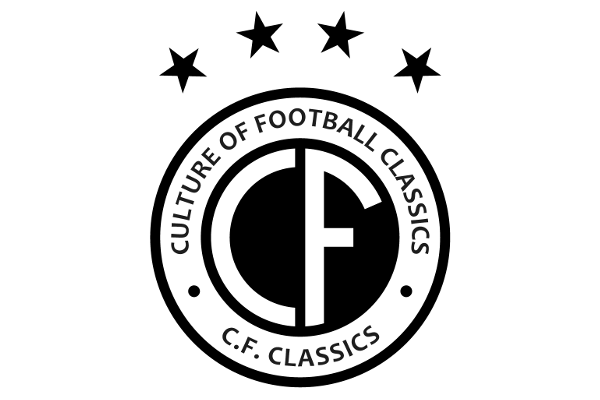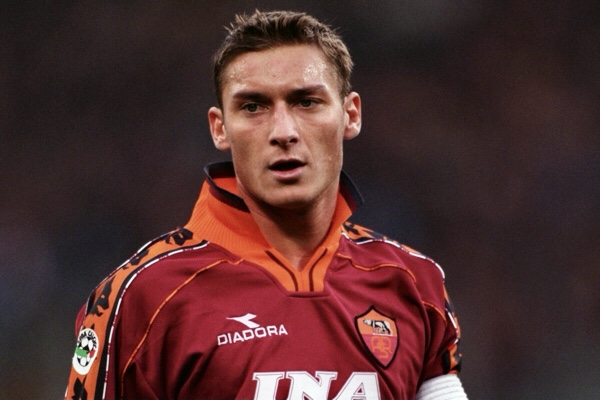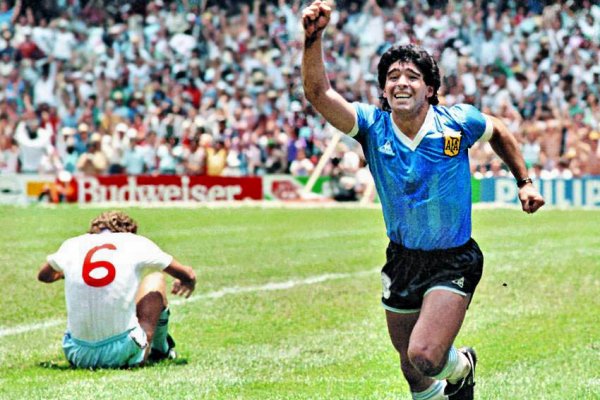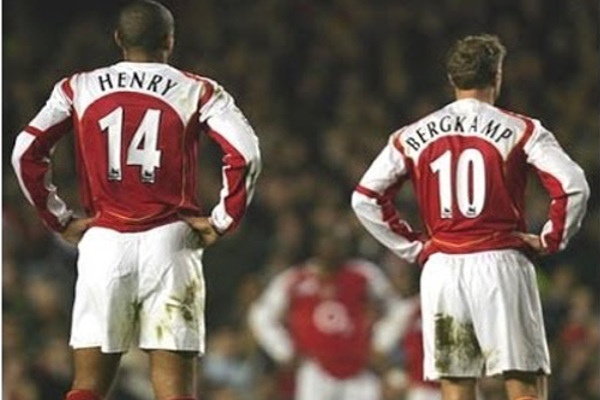The Alternative Maradonas
Whilst Argentina understandably went hunting high and low for the next Maradona, in a vain attempt to find someone worthy of replacing the great man himself in their national team, the rest of the world also did a pretty good job of finding their own impersonators, spawning a whole host of fantastically named alternative Diego's...
Maradona of the Alps - Andi Herzog
One of Austria's finest players, Herzog made his name as an attacking midfielder with Rapid Vienna in the late 1980s. His ability at free-kicks and running with the ball would earn him the Maradona of the Alps tag, as well as a move to Werder Bremen in the Bundesliga in 1992, the same year he won the Austrian Footballer of the Year award. He impressed enough for Bayern Munich to make a move for him, but he would only spend a single season in Bavaria before transferring back to Bremen.
In 2002 Herzog became Austria's most capped player, and would retire from international duty with 103 caps, still a national record.
Maradona of the Bosphorous - Emre Belözoglu
With a beautiful left foot and fantastic natural technical ability, Emre Belözoglu is widely regarded as the most talented player that Turkey has produced, high praise indeed given the quality of some of the players that the country produced in the 1990s.
Having come through the youth ranks at Galatasaray, Emre Belözoglu made his debut for the first team as a 16 year-old in the 1996-97 season. His incredible talent would soon see him establishing himself as a key player in the team, and his creativity would help the club win three Süper Lig titles in a row at the end of the 1990s. His performances would see him earn a big money move to Inter Milan in 2001 but, despite some great times at the San Siro, persistent injuries would bring an end to his time at the club.
Maradona of the Carpathians - Gheorghe Hagi
Of all the alternative Maradonas, Hagi, as the "Maradona of the Carpathians", is probably the most famous, and the most fitting, with a wand of a left foot and an ability to inspire his team-mates, particularly at national level.
Whilst he would shine brightly at a global level in the 1990s he would also light up the 1980s with some phenomenal performances for both club and country, most notably in the Steaua Bucuresti team that would become a feared opponent in Europe for the continent's wealthy and established elite clubs. They'd famously won the European Cup against the odds in 1986 when they beat Terry Venables Barcelona side on penalties. In the 1988-89 season they were at it again, romping through the rounds with goals flying in, Hagi scoring six goals in the eight games that lead up to the final, whilst team-mates Marius Lacatus and Ilie Dumitrescu also contributed eleven goals between them. It was this run to the final that really elevated Hagi to the attention of fans and media across Europe. Unfortunately, in the final, Hagi and Steaua came up against a Milan side that was at the very peak of its form, a team that had demolished Real Madrid 6:1 in the semi-finals, so a 4:0 defeat at the Camp Nou was a disappointing end to their European campaign.
Maradona of the Caucasus - Georgi Kinkladze
Kinkladze became a cult hero at Manchester City before they became the money club they are now. Francis Lee, the City chairman at the time, saw him play for Georgia against Wales and agreed a fee of £2 million for him with his club, Dinamo Tbilisi, in the summer of 1996. These were dark days for City and their long-suffering supporters, but Kinkladze was the one player who lit things up for them and provided some memorable moments with his slaloming runs and cultured left foot.
Maradona of the East End - Joe Cole
A child prodigy who came up through the ranks of West Ham Utd (hence the East End tag), Joe Cole was touted as England's most exciting prospect at the turn of the century. Along with Michael Carrick he formed a great midfield partnership, a couple of young English players who looked like they could actually pass the ball intelligently and play with the same flair as their continental counterparts. Unfortunately, despite having a fine career, winning lots of trophies and scoring some great goals, Cole never quite reached the highest level that fans hoped he would, given the talent he'd showcased so early in his career.
Maradona of Italy - Gianfranco Zola
Fantastic little playmaker, and one of those footballers who seemed to be widely loved by many fans across the game, not just those of the clubs he played for. Zola rose to prominence in the early 90s at Napoli, having been purchased from the Sardinian club, Torres. Diego Maradona was obviously the resident number 10 at Napoli at that time, but Zola started to make a name for himself as his understudy with some great cameo performances. Training with Maradona would prove to have a huge effect on Zola, as he built up a friendship with him and analysed his techniques, particularly from dead-ball situations.
Maradona of the Orient - Hidetoshi Nakata
When Perugia paid J-League side Bellmare Hiratsuka 4 mullion US dollars for a 21 year old attacking midfielder called Hidetoshi Nakata in 1998 many critics scoffed at the transfer, claiming that the Japanese youngster would be completely out of his depth in Serie A. They were soon eating their words though, as Nakata bagged 10 goals in just 33 Serie A games to make himself one of football's hottest prospects. Nakata's move to Italy also had a phenomenal effect on football back in Japan too, as thousands of "Nakata No7" Perugia shirts were sold and thousands of Japanese fans descended on the small Umbrian city to see him play!
Maradona of the 60's - Omar Sivori
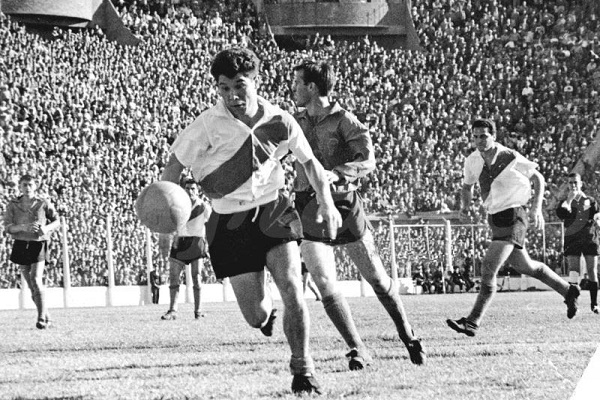
Omar Sívori, socks rolled down, playing for River Plate vs Huracán.
Photo: Wikimedia Commons / El Gráfico
Few players, are given a retrospective nickname, but, in articles written about Omar Sivori in recent years, he's been dubbed "the Maradona of the Sixties", which shows exactly just how highly he was rated.
One of the footballing greats of the 1950s and 1960s, Omar Sívori seemed way ahead of his time with some of his skills and tricks, including his trademark tunnel (nutmeg), and there was almost an arrogance about him when he was on the ball. Sívori's dribbling and pace when running with the ball were phenomenal, whilst his flicks, feints and movement highlighted his invention and speed of thought.
Sívori made his name at River Plate in the mid 1950s, helping the club regain the Argentine title in 1955, before winning the following two titles as well. He was soon making a name for himself on the international stage as well, being named player of the tournament as Argentina won the South American Championship in 1957 with a wonderful attacking partnership that was nicknamed "Los Carasucias" (the Angels with Dirty Faces). This deadly partnership featured Sívori alongside Omar Corbatta, Osvaldo Cruz, Humberto Maschio and Antonio Angelillo. His form alerted big-spending Italian clubs and resulted in Juventus breaking the world record transfer fee to take him to Turin,
In Turin, Sívori endeared himself to the Juve faithful with his creativity, skill and passion, forming a formidable attacking trident with club legend Giampiero Boniperti and Welshman John Charles. This earned him another football partnership nickname - "Le Trio Magico" (The Magic Trio). He used to play with socks down around his ankles, without any kind of protection, to show he wasn't scared of defenders. He won the Scudetto three times in his first four seasons at Juventus, and his performances earned him the Ballon D'Or award in 1961.
The Greek Maradona - Vasilis Hatzipanagis
One of the most talented Greek players of all-time, but also one of the most unknown amongst international football fans.
One of the main reasons that he is almost unheard of amongst fans outside of Greece is that he was unable to play for the country because he'd actually already represented the Soviet Union at under 19 level. He'd been born in 1954 in the Soviet city of Tashkent to Greek political refugees. Scouted by local side Pakhtakor, he starred for them for three years before the political situation in Greece meant that he and his family could head back there in the mid 1970s. Signing for Iraklis F.C. in the city of Thessaloniki, Hatzipanagis became a legend for the club and spent the next fifteen years there. The long-haired attacking midfielder would transfix the Iraklis support with his spellbinding performances, is incredible dribbling and footwork leading to the nickname of "the footballing Nureyev". Fearful of upsetting the club's fanbase, Iraklis would turn down the advances of a number of huge European clubs in order to keep him there, and although this was great news for the locals, it would mean the wider football audience would be starved of seeing his talent.
Kvaradona - Khvicha Kvaratskhelia
Yes, he may also be known as the Georgian Messi, but having burst into the limelight in 2022 following his move to Napoli, he was also nicknamed Kvaradona, as the media likened his talents to that of the Italian club's former Argentinian legend.
Kvaratskhelia's all-out attacking mindset, and the ease in which he seems to go past defenders, has made him one of football's hottest properties.
Tweet
